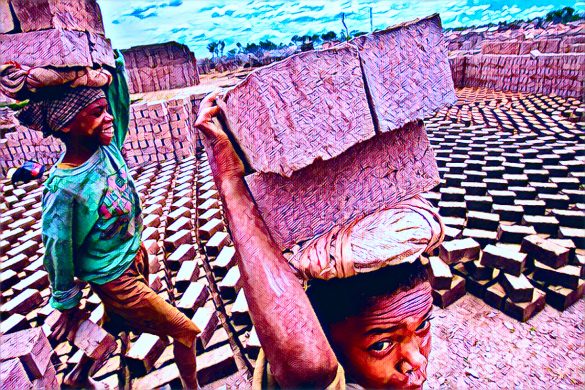KEY POINTS
- Zimbabwe’s economic crisis has driven many children into dangerous labor.
- School dropout rates have risen as children are forced to work instead of attending school.
- Child labor is common in agriculture and mining, where children face serious health risks.
In Zimbabwe, a nation facing persistent economic downturn, child labour has emerged as a troubling but pervasive reality. In order to survive, thousands of children in Zimbabwe are compelled to work in hazardous conditions, forgoing their education and future.
Known as Africa’s breadbasket, Zimbabwe has experienced decades of economic instability. Following years of political unrest, land reforms, and hyperinflation, the country has seen the collapse of numerous industries.
Although the entire population has been affected by these crises, children have been particularly severely struck, being forced into labour as their families fight to make ends meet.
Economic decline fuels child labor
Many families are now forced to work in the informal economy, where it is possible to get jobs no matter one’s qualifications. Children are also included in the workforce, which is a devastating reality.
Due to the economic crisis, children are increasingly viewed as essential contributors to family income in both rural and urban regions.
They are involved in the harvesting of sugarcane and tobacco. Many of these kids no longer see attending school as an affordable privilege.
Education suffers as families struggle
The effects of the economic collapse have not been spared Zimbabwe’s education system. Books, desks, and teachers are among the essential supplies that schools, especially those in rural areas, frequently lack.
The Ministry of Primary and Secondary Education reports that while enrolment rates have been gradually falling, dropout rates have increased significantly over the past ten years.
The hard work of survival
In Zimbabwe, there are various types of child labour. In rural areas, children work on cotton, tobacco, and maize farms, frequently handling hazardous chemicals without any form of protection.
One of the primary exports from the nation is tobacco, which is a particularly hazardous crop. According to a report by Human Rights Watch, children who work in tobacco farms run the risk of handling tobacco leaves, which can cause nicotine poisoning.
In the mining sector, the situation is equally heartbreaking. According to the Zimbabwe Environmental Law Association (ZELA), children as young as 10 are employed in hazardous jobs like gold panning, a common practice in artisanal and small-scale gold mining. This type of child labour is extremely dangerous because of the possibility of accidents, exposure to mercury, and other health-related problems.
“I come here because we barely have anything to eat at home,” says 17-year-old Tanaka Chikwaka. Wearing tattered, muddy clothing, Tanaka carries a bucket full of river sand, offloads it into a homemade mill to separate any precious gold from the sand, and wipes the sweat from his forehead.
Urban areas are no better, with kids frequently working as household helpers, street vendors, or beggars. Since there are few labour laws in Zimbabwe’s informal economy, which now employs the majority of the country’s workforce, juvenile labourers are particularly susceptible to abuse.
Health and psychological impacts
Child labourers face alarming health consequences. The ILO claims that because child labour is physically demanding, many young labourers experience injury, exhaustion, and starvation. Hazardous chemical exposure can lead to long-term health problems, such as respiratory ailments and developmental problems. This is especially true in the mining and agriculture industries.
The psychological cost is also somewhat worrisome. Children who work long hours under abusive circumstances frequently suffer from stress, hopelessness, and trauma. In the absence of early childhood development and education, their future appears bleak.
Government response and challenges
Zimbabwe has accepted several international conventions designed to end child labour, such as the ILO’s Minimum Age Convention and the United Nations Convention on the Rights of the Child. However, enforcement remains weak.
A large portion of the burden has been assumed by civil society organisations, who collaborate with local communities to promote awareness and aid families in need.
The way forward
Resolving the fundamental causes of child labour in Zimbabwe—poverty, illiteracy, and unstable economic conditions—is necessary to end it.
According to experts, to reduce the number of children coerced into labour, there is a requirement to improve the economic situation of the country. It is possible to relieve children from poor families through social protection programs that provide food assistance and financial transfers to families in need.
Prioritising education is necessary. Reducing or doing away with school fees, especially in rural regions, would help keep children from quitting school and joining the labour force prematurely.
There is an urgent need for more robust government action and international assistance. Many children deeply feel that their future is in jeopardy.


